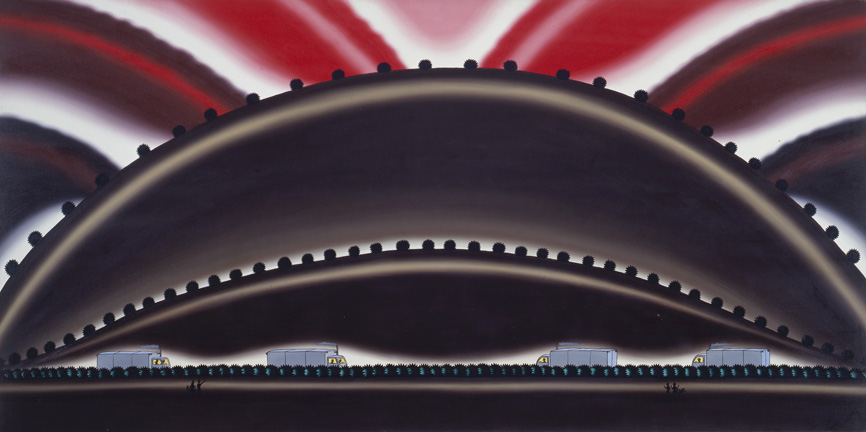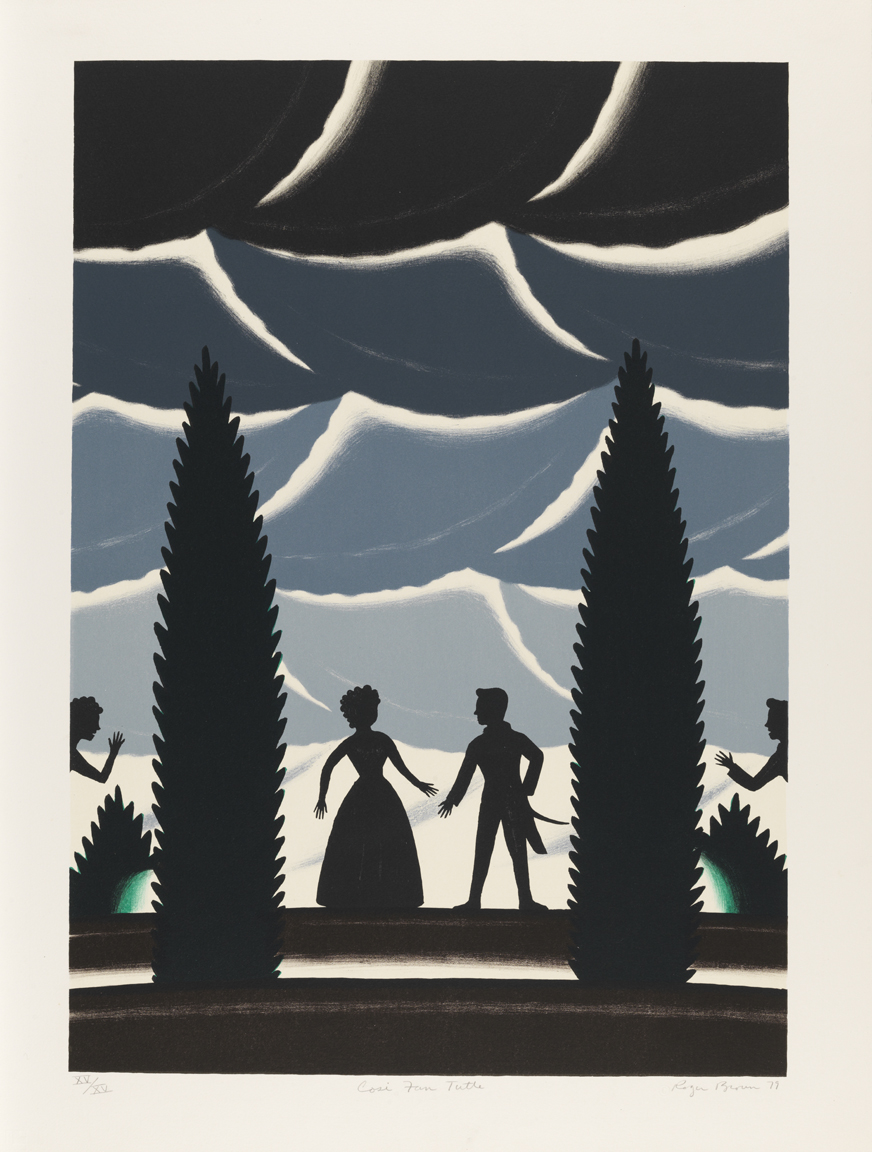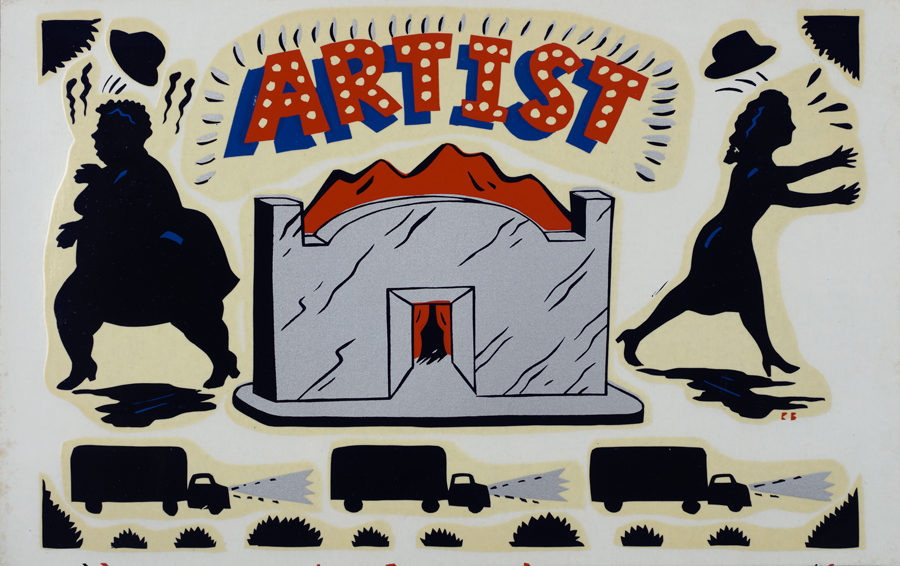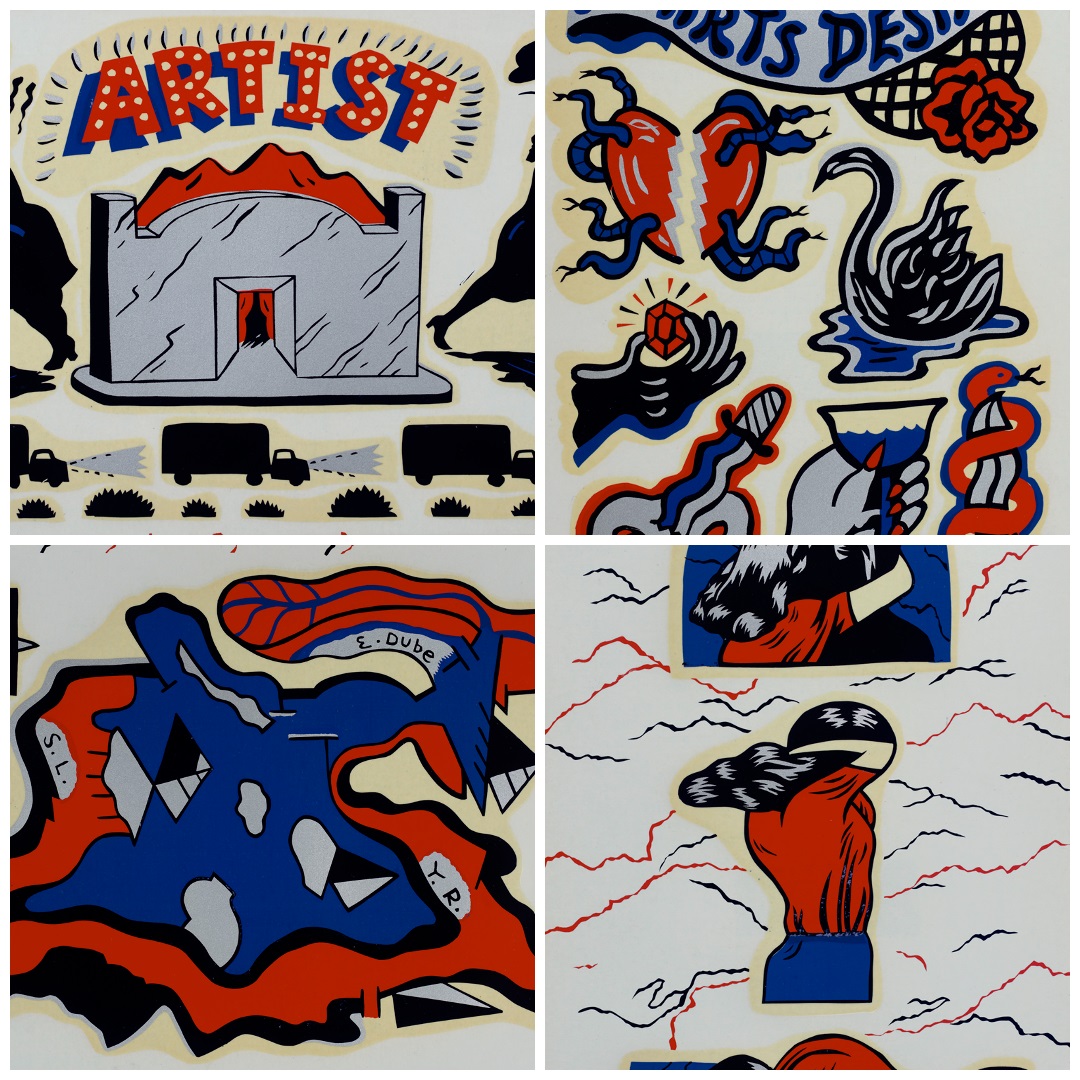
Michigan City Sand Dune Mt. Baldy
Roger Brown
This painting depicts the massive sand dune known as Mt. Baldy at the Indians Dunes National Lakeshore. Located in northwest Indiana along Lake Michigan's southern shoreline it encompasses 14,000 acres of forest, marsh, dunes, and beach, providing a unique ecosystem. This habitat boasts 1,500 species of plants ranging from arctic bearberry to cactus. Among the most impressive features are its sand dunes, which were created by passing glaciers during the Ice Age. Mount Baldy is the largest "living" dune in the area, rising to the height of 123 feet. The massive mound moves south at a rate of four to five feet each year, burying all in its path.
Mount Baldy is represented as an ominous dark half-moon shaped hill that fills up most of the space in the painting. It is decorated with over one hundred shrubs that dot the hill in regular intervals, creating a pulsating rhythm. A smaller rise just before the larger peak is illuminated with white light, its glow making prominent silhouettes of the shrubs. Further down, a highway lies in Mt. Baldy's shadow, and four trucks speed along, their cabs illuminated with yellow light. The silhouettes of people in the cabs and in the foreground are common devices used by Brown in his work. Brown has depicted the sky with long curved, fiery red bands of light, which signal odd weather phenomena near Lake Michigan as the sun sets. The entire picture is arranged with an insistent symmetry that calls to mind Brown's study of American folk art and graphic novels.
Artist
Date of Birth
(1941-1997)
Date
1983
Medium
Oil on canvas
Dimensions
48 x 96 in. (121.92 x 243.84 cm.)
Accession #
2006.15
Credit Line
Henry C. Gibson Fund
Copyright
© artist or artist's estate
Category
Subject
We're so excited you're planning to visit PAFA!
Make time for art — visit us Thursday to Sunday.
Before reserving your tickets, please review helpful information about museum hours, accessibility, building access, and special admission programs.
If you have any questions, feel free to reach out to us at visitorservices@pafa.org — we’d love to help!



